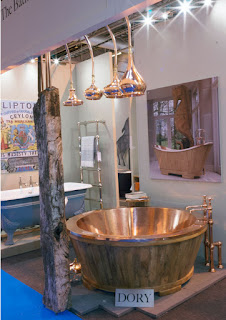 Exhibiting for the first time at kbb, Hurlingham the Bath Company displayed their collection of free-standing baths and bathroom accessories in a range of materials including copper, cast iron and stainless steel,
and we are glad to report a fantastic response was the order of all four days.
Exhibiting for the first time at kbb, Hurlingham the Bath Company displayed their collection of free-standing baths and bathroom accessories in a range of materials including copper, cast iron and stainless steel,
and we are glad to report a fantastic response was the order of all four days.
“With the number of bathrooms per UK household
growing… kbb Birmingham is THE place to discover the latest products.
Market research shows
that the bathroom sector is seeing the most growth… a trend led by showering
& wet rooms, but followed closely by bathroom accessories and baths - which
are slowly being repositioned as the 'luxury' option.” – 'The Future Bathroom' - www.kbb.co.uk
The 2016 edition of kbb promised to be an exciting and busy few days showcasing the latest in trends, materials and designs from all corners of the kbb industry…
And Boy! How correct those promises turned out to be!
The 2016 edition of kbb promised to be an exciting and busy few days showcasing the latest in trends, materials and designs from all corners of the kbb industry…
And Boy! How correct those promises turned out to be!
Starting at 10am on Sunday 6th March the
Hurlingham stand, situated in position C54, garnered interest and eager
discussions from showgoers almost immediately after doors opened.
Interest from far (Dubai, Nigeria and Portugal) and near
(Yardley, Solihull and Birmingham) meant that many brochures were given out and
contact details exchanged, so much so, we had to arrange a restock of brochures
from the main office, not once, but twice!


